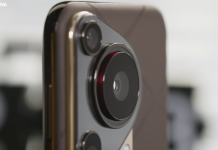When Apple announces a new chipset, it’s often met with excitement around the world. This year, the spotlight was on the A17 Pro. But how does it fare against its predecessor, the A16 Bionic?
Let’s break it down.
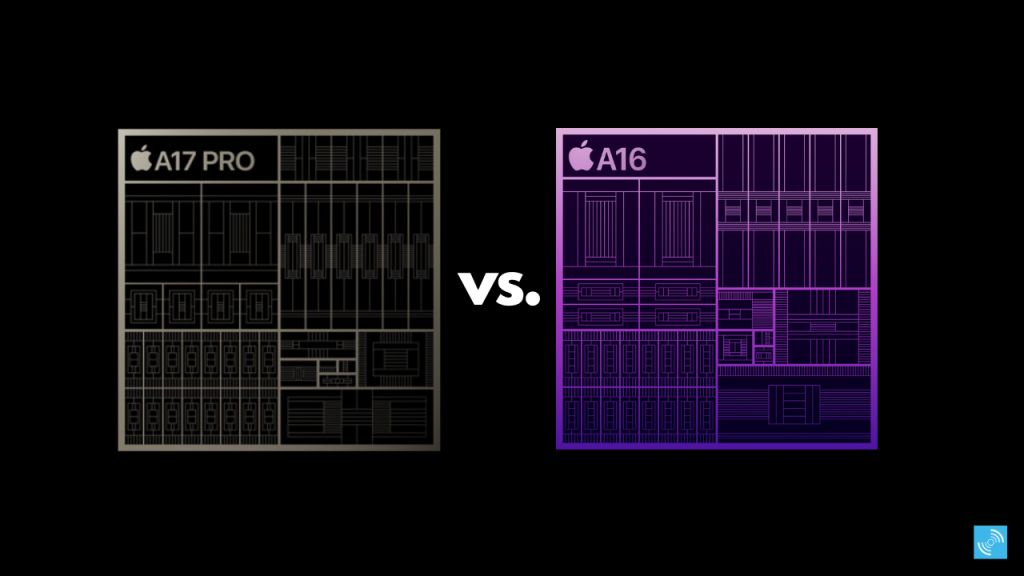
A17 Pro vs A16 Bionic Chipset Comparison
Manufacturing Process
A17 Pro: The standout feature of the A17 Pro is the industry’s first 3-nanometer chip built on TSMC’s latest 3nm fabrication process. This nanometric reduction from its predecessor means the chip can fit more transistors in the same space, resulting in improved performance and energy efficiency. To be precise, the A17 Pro houses approximately 19 billion transistors.
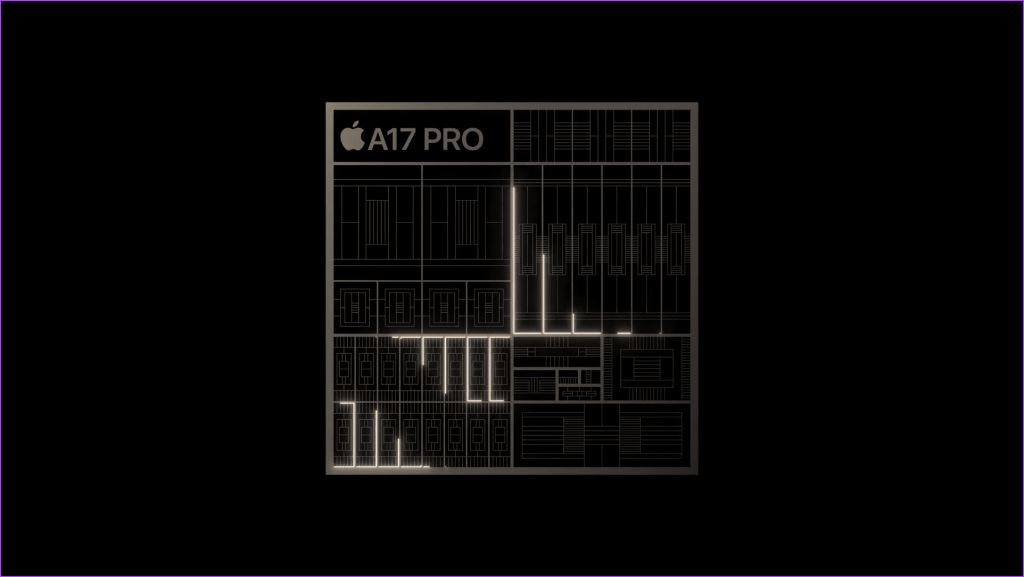
A16 Bionic: The A16 Bionic, which works on a 4nm process and has around 16 billion transistors, was quite impressive in its time. However, with its 3nm process, the A17 Pro represents a major step ahead.
Raw Performance
CPU Cores: Both chips feature a 6-core CPU. However, architectural enhancements in the A17 Pro deliver what Apple describes as “the fastest single-threaded performance in any smartphone.”
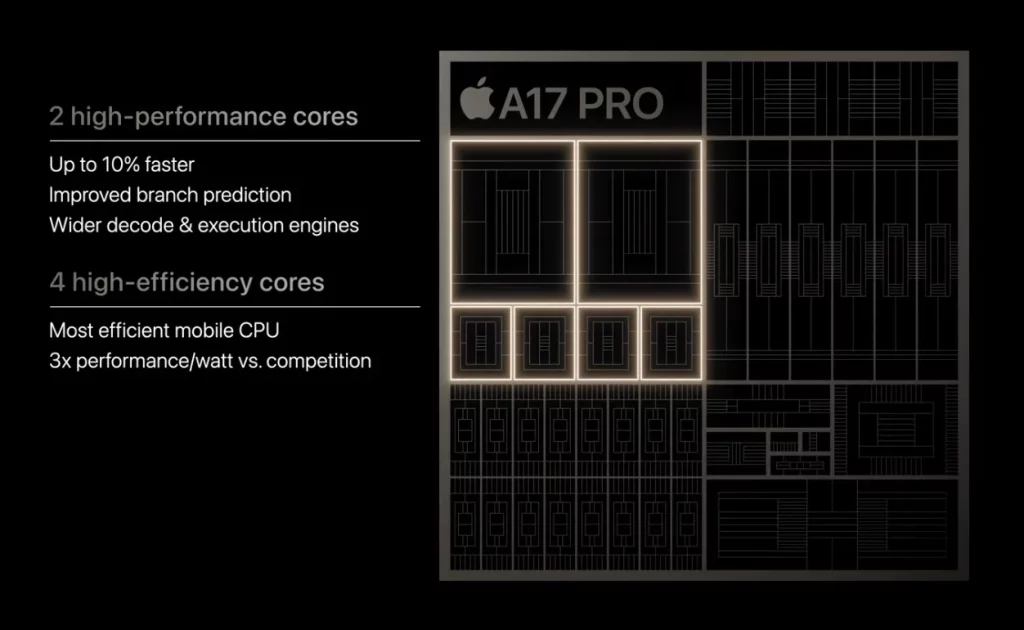
Geekbench Insights: Benchmarks indicate a substantial performance boost for the A17 Pro. The single-core performance on Geekbench shows an improvement of around 16%, and the multi-core performance jumps by approximately 13% compared to the A16.
AnTuTu Insights: The iPhone 15 Pro Max scored 1,641,883 points on AnTuTu. In the CPU test, it achieved 392,643 points, and in the GPU test, it scored 597,734 points. It excelled in the memory department with a score of 306,164, surpassing the iPhone 14 Pro Max’s score of 233,925.
Graphical Prowess
GPU: While the A16 Bionic houses a 5-core GPU, the A17 Pro ramps it up with a 6-core GPU. According to Apple, this enhancement results in up to a 20% performance boost.
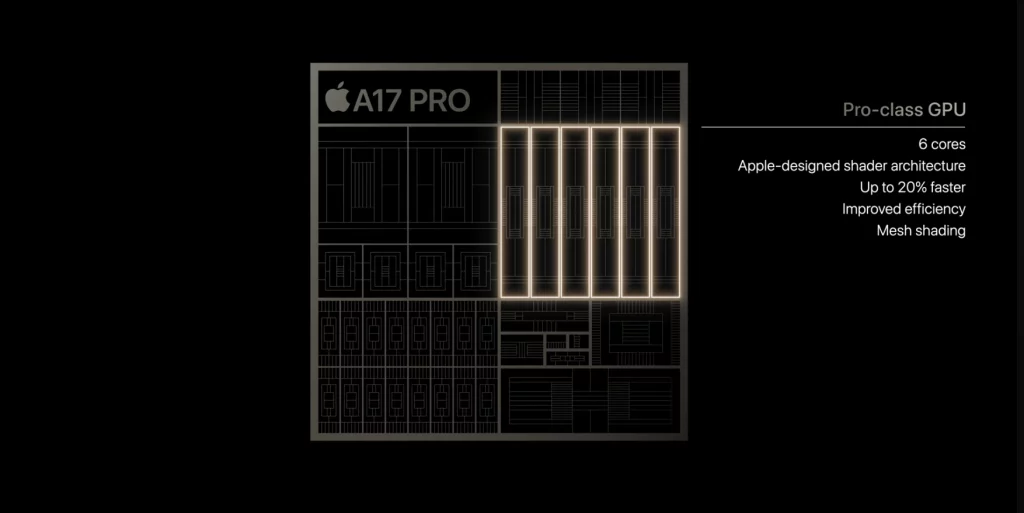
Real-World Impacts: This isn’t just a numbers game. The added core means better handling of high-res graphics, from gaming to professional graphic tasks.
Moreover, the A17 Pro’s GPU includes hardware-based ray tracing, a significant improvement in rendering realistic lighting and shadow effects. To be precise, the A17 Pro chip offers four times faster ray tracing performance compared to the A16 Bionic.
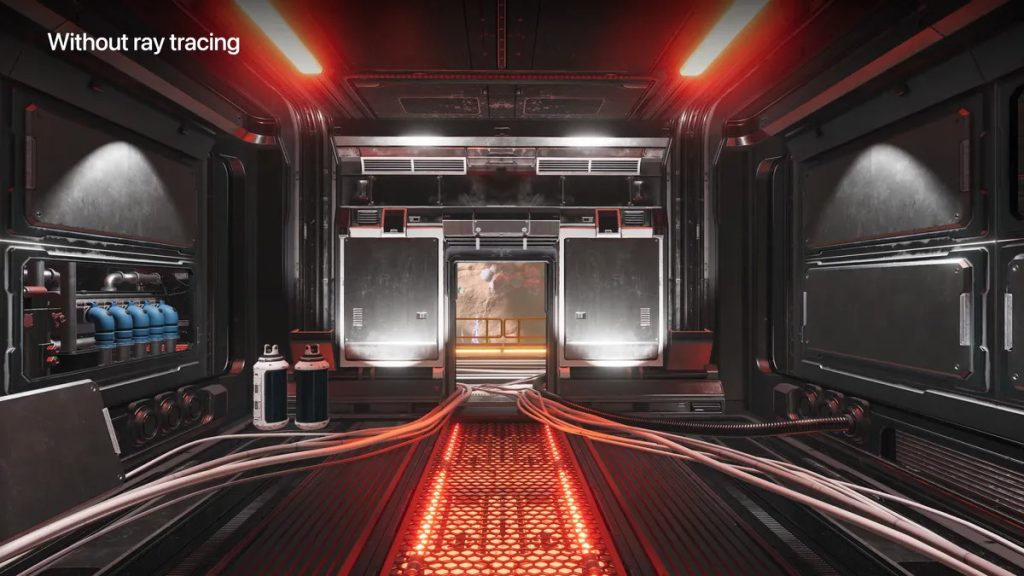

GFXBench Insights: In GPU benchmark results on GFXBench, it outperformed the A16 Bionic by significant margins. For example, in the Aztec Ruins High Tier Offscreen test, the iPhone 15 Pro Max with A17 Pro performed about 19% better than the iPhone 15 Plus with A16 Bionic. In the Manhattan 3.1 Offscreen test, the A17 Pro showed improvements of up to 31.5%, with 199.8 fps compared to the A16’s 151.9 fps. While not all comparisons reached the advertised 20% boost, the A17 Pro appears to deliver greater GPU performance improvements.
AI and Neural Capabilities
Neural Engine: Artificial Intelligence (AI) tasks play a crucial role in modern smartphones. While both chips incorporate a 16-core Neural Engine, the A17 Pro’s version is said to be twice as fast, performing up to 35 trillion operations per second. This leads to improved performance for AI tasks and better photo and video optimizations.
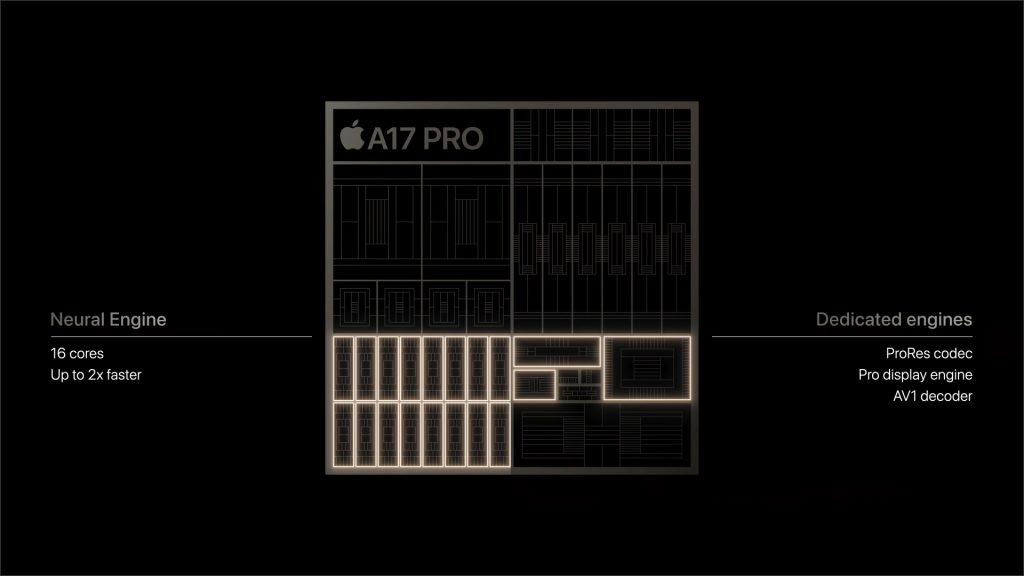
Memory and Efficiency
RAM: The A17 Pro boasts 8GB LPDDR5 RAM, outshining the A16’s 6GB. This additional memory will assist in multitasking, allowing smoother app transitions and better performance in memory-intensive tasks.
Efficiency: The A17 Pro’s 3nm process improves energy efficiency, enabling tasks to be performed with less power consumption. This leads to longer battery life and reduced heat generation, ensuring the device remains cool during demanding operations.
Improved ISP (Image Signal Processor)
Photonic Engine: The A17 Pro features improvements in its Image Signal Processor, including the new Photonic Engine and Smart HDR 5, resulting in improved photo and video quality compared to the A16 Bionic.
Mesh Shading: It also introduces Mesh shading and offers video capabilities such as 2.8K @ 60 fps in Cinematic and Action Modes, surpassing the A16’s 30 fps limit. Additionally, the A17 Pro captures 48MP HEIF images in addition to 48MP Pro RAW images.
Connectivity and Additional Features
USB 3 Performance: The A17 Pro brings USB 3 capabilities to iPhones, allowing for faster data transfer rates of up to 10 Gbps, a significant step up from the 480 Mbps seen in the A16 Bionic.
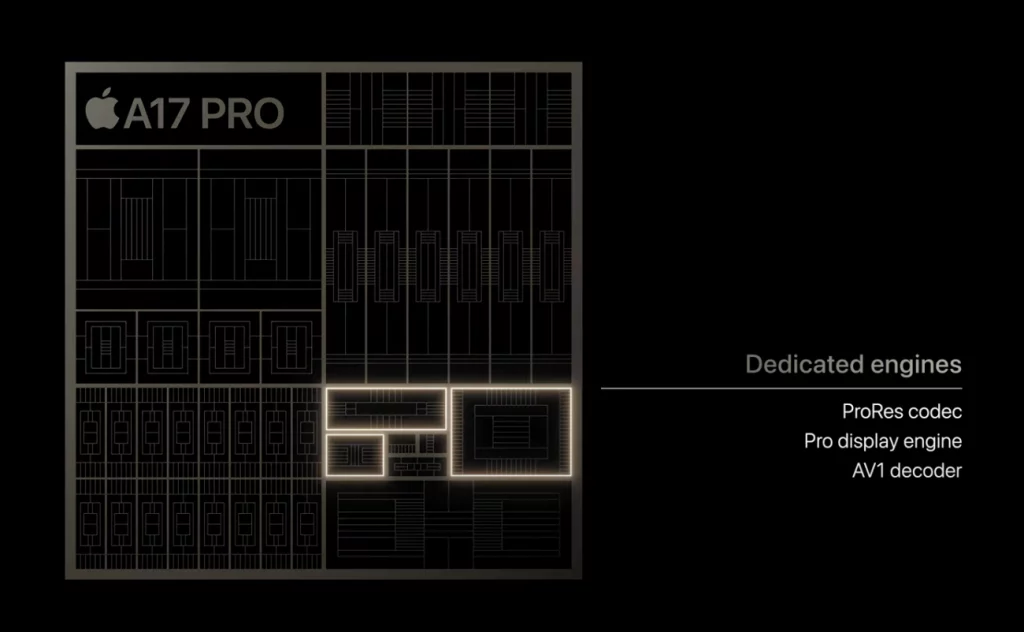
Media Engines: The A17 Pro also stands out with the addition of an AV1 decoder, expected to improve video streaming on newer iPhones.
The A17 Pro builds upon the A16 Bionic’s foundation with a range of refinements and enhancements, solidifying its position as a formidable contender in the mobile chipset industry.
The importance of these enhancements may vary from user to user, but for those seeking top-tier performance, the A17 Pro establishes a new standard in the continually evolving realm of smartphone technology.
RELATED:
- Analyst predicts Huawei’s comeback will hurt iPhone 15 sales
- Apple Magic Accessories With USB-C Port Tipped To Arrive Next Month
- Apple to Fix iPhone Radiation Levels with Software Update
- iPhone 15 Pro Max vs Samsung Galaxy S23 Ultra: Specs Comparison
- iPhone 15 Pro vs iPhone 15: Specs Comparison

